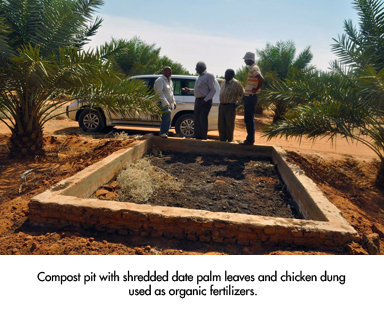Though it lies in the Tropics, Sudan’s climate ranges from arid in the North to tropical in the South West.
Arid and semi- arid areas are characterised by erratic and low precipitation of 700 mm per annum, experience periodic drought, poor vegetation and poor soils. The area north of the Khartoum, Sudan receives an average of between 165 mm precipitation per annum. Daytime temperature ranges from 32 to 44 degrees Celsius. There have been attempts by advanced farmers to plant tropical fruits in these arid areas of Sudan.
In spite of such dry conditions, the abundant ground water, has made it possible to cultivate tropical fruits in the areas North of Omdurman, Khartoum.
The Algoussi Company has developed 65 ha of land: about 35 ha planted with dates, while the other 30 with grapefruit, pomelo, limes, guava, buckthorn (Ziziphus sp.), and trial plots of mango. The grapefruit, pomelo, guava, and buckhorn have shown promise of good growth.
The irrigation distribution system comprising of pumps, concrete ponds, primary and secondary pipe network, and drippers are key factors for the trees to survive arid conditions. The plants are placed in compost-filled holes with slight earth mounds around the canopy for each planting point, maintaining soil moisture and preventing irrigation water loss by run off.
Compost is used to improve the soil structure and water holding capacity. It is a mix of shredded date palm leaves and chicken dung. Other cultural practices include the planting of wind breakers and legume cajanus cajan to improve the soil nitrogen content around the planting hole during establishment.
The growing of tropical fruits in arid areas may be able to assist in mitigating desertification with the condition that there is adequate underground water. Tropical fruit trees also make good wind breakers.



